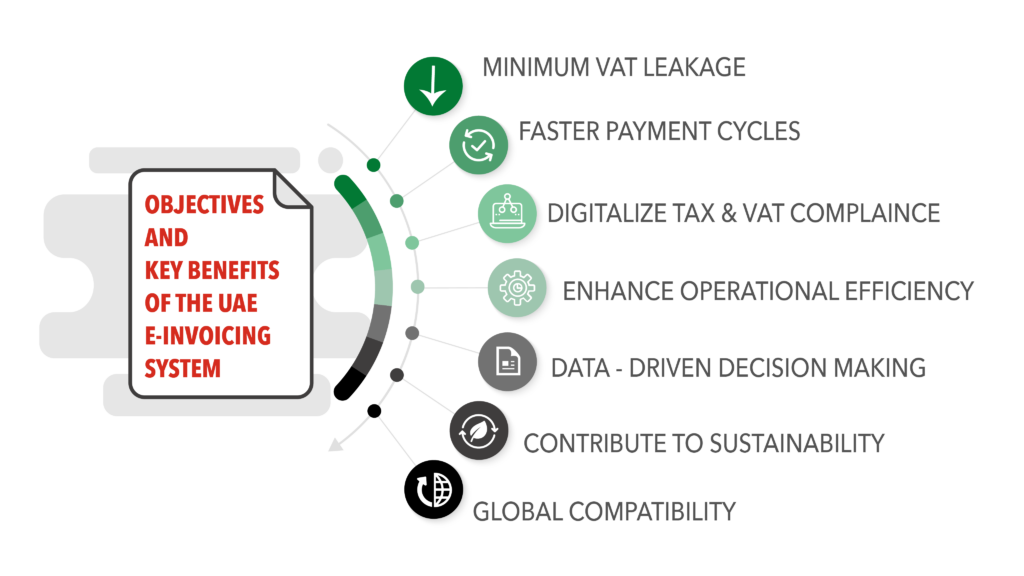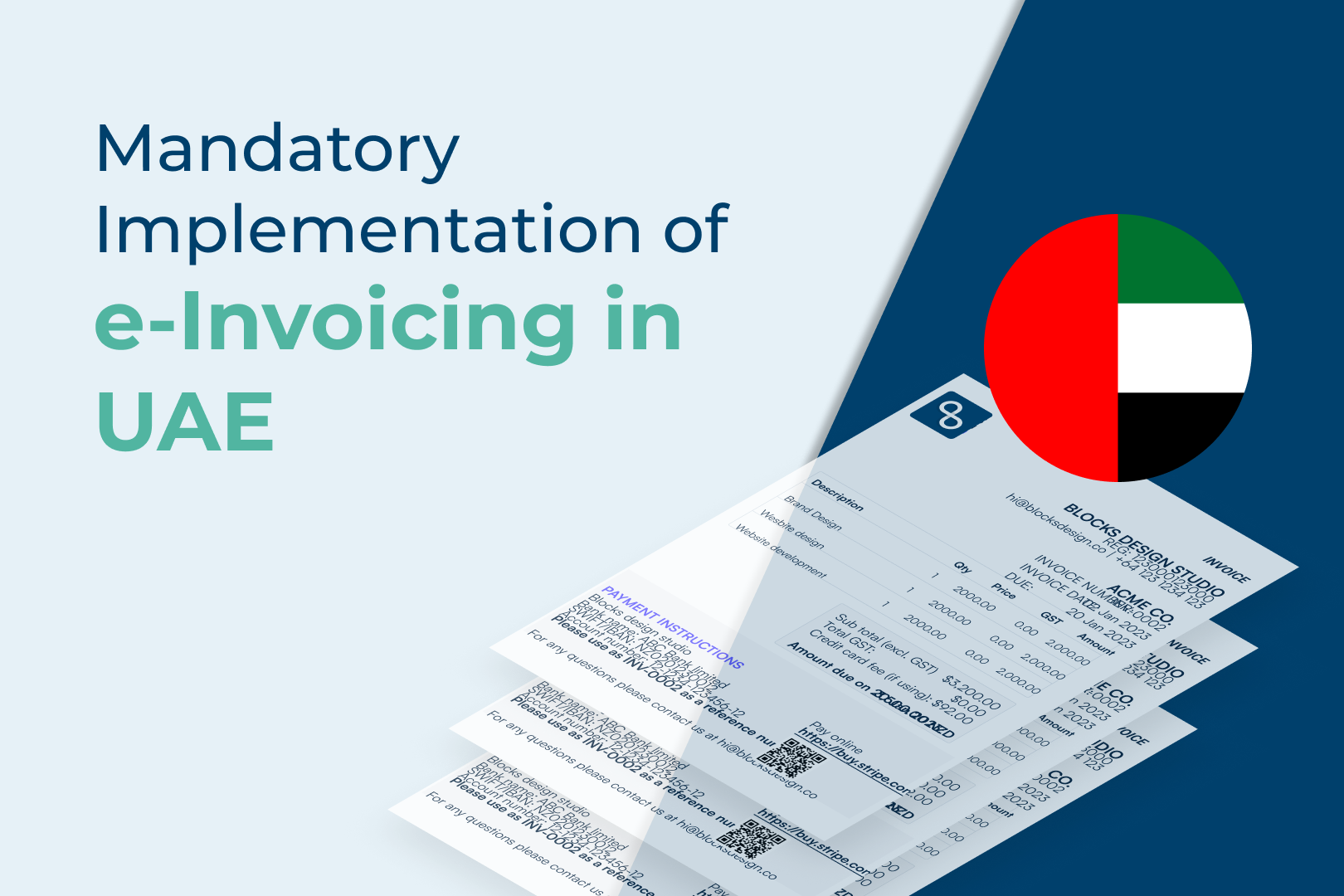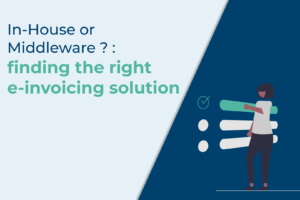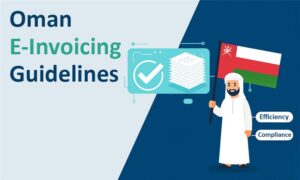Introduction
Set to launch in 2026, the United Arab Emirates (UAE) government has taken steps to move towards a fully digitized tax system by adopting e-Invoices.
The UAE Ministry of Finance (MoF) has announced the implementation of an electronic invoicing (e-Invoicing) system for business-to-business (B2B) and business-to-government (B2G) transactions. The e-Invoicing system will utilize the Open Peppol network as a platform for transaction control and exchange.
What is e-Invoicing in the UAE?
e-Invoice in the UAE refers to a structured electronic format for issuing and exchanging invoice data between the buyer and supplier. These invoices are reported electronically to the UAE Federal Tax Authority (FTA).
- e-Invoicing is a government-mandated digital framework requiring businesses to issue, process, and report invoices electronically.
Note: Unstructured invoice formats such as pdf, word document, images, scanned copies and emails do not qualify as e-Invoices.

How it works: UAE e-Invoicing Process Flow
The e-Invoicing system in UAE is based on the Peppol “5 corner” model, with the MoF and FTA serving as one corner to collect and store e-Invoices. Under this framework, it is mandatory for taxpayers to engage commercially with an Accredited Service Provider (ASP), a technology vendor accredited by the UAE MoF. ASPs will have a direct connection to the UAE’s e-Invoicing technology infrastructure.
Who are covered in the scope of UAE e-Invoicing
The UAE e-Invoicing system is applicable to all taxpayers issuing invoices under the UAE VAT law. This includes businesses of all sizes:
Note:
- Like KSA e-Invoicing (FATOORAH) roll-out, large taxpayers are likely to be the first to adopt UAE e-invoicing as a part of the initial phases.
- Smaller taxpayers will follow in subsequent phases, with specific thresholds based on the annual turnover.
UAE VAT groups are also required to comply with the e-Invoicing mandate, with each member individually integrating with an ASP, while using the group’s Tax Registration Number (TRN) to ensure all transactions are captured within the new e-Invoicing regulations.
Key dates released by MoF for UAE e-Invoicing
The potential dates released by the UAE government are:
Q4 2024: Commencement of UAE Service Provider accreditation procedures
Q2 2025: Legislative updates related to e-Invoicing by MoF
Q2 2026: Starting July 1, 2026, phase-1 to go live for B2B and B2G e-Invoicing
Key VAT Law Amendments for e-Invoicing in UAE
With the introduction of e-Invoicing in the UAE, Federal Decree-Law No. 16-17 of 2024 amended the UAE VAT Law to incorporate mandatory e-invoicing, effective from 30 October 2024.
- Introduction of key definitions for Electronic Invoicing System, Electronic Invoices, Electronic Credit Notes, and more to include digital formats in their regime.
- Addition of a new requirement focusing on retaining e-invoices for VAT recovery, ensuring digital proof of tax recovery for qualifying transactions.
- Regulation for taxable companies to issue both tax invoices and credit notes electronically.
Why choose Symtrax Software for UAE e-Invoicing?
Symtrax, being a global e-invoicing solution provider with international e-invoicing expertise, ensures a smooth transition to the UAE e-invoicing mandate. Symtrax e-Invoicing solution offers secure and compliant e-Invoicing with digital audit trails for every transaction.
Key features:
- Quick Implementation
- Seamless integration with UAE MoF and FTA Portal
- Peppol-enabled solution
- End-to-end invoice processing
- Generate digitally signed invoices
- 100% compliant with UAE’s e-Invoicing regulations and VAT laws
Our tech-backed solution reduces the chances of any misconduct and ensures that only valid invoices are processed.
Conclusion
The adoption of e-Invoicing is growing across the GCC, with Kingdom of Saudi Arabia’s ZATCA (Zakat, Tax and Customs Authority) e-Invoicing mandate, and the UAE gearing up for its own e-Invoicing requirements in 2026. This shift enables better transparency, streamlines tax collection, and modernizes the way businesses are done.


